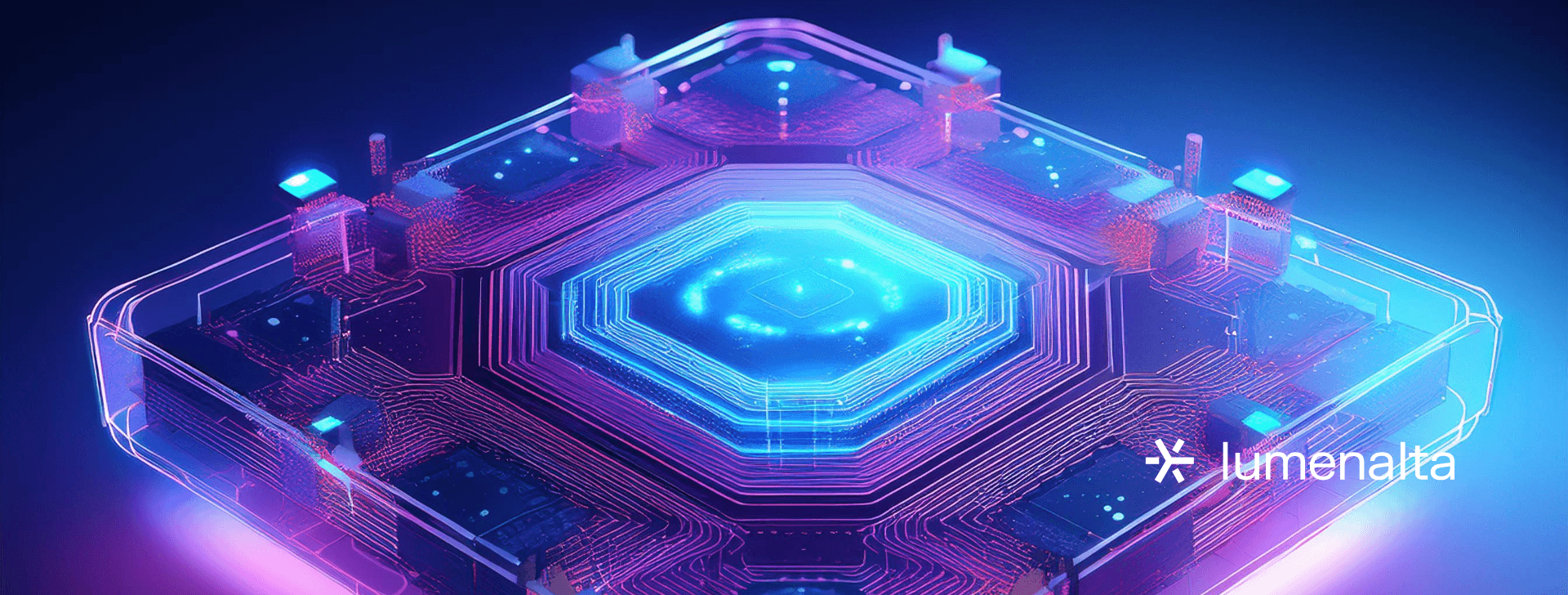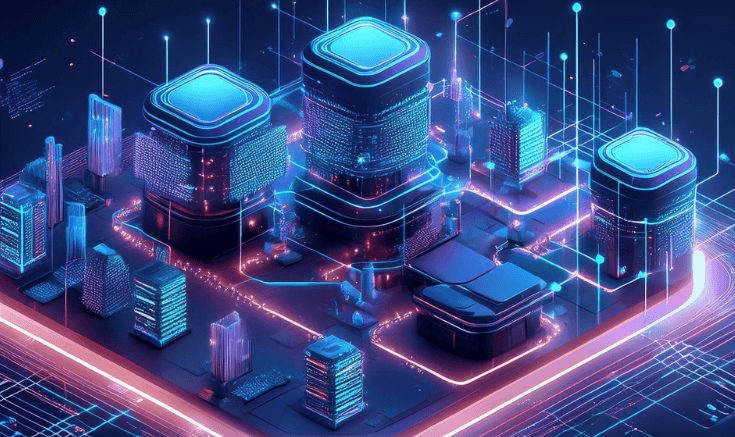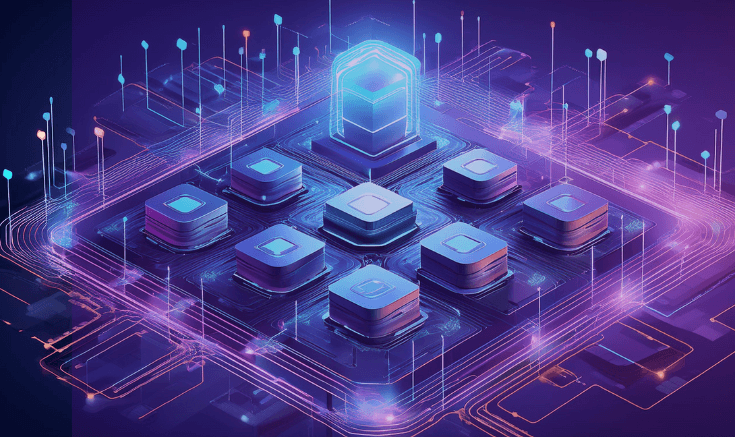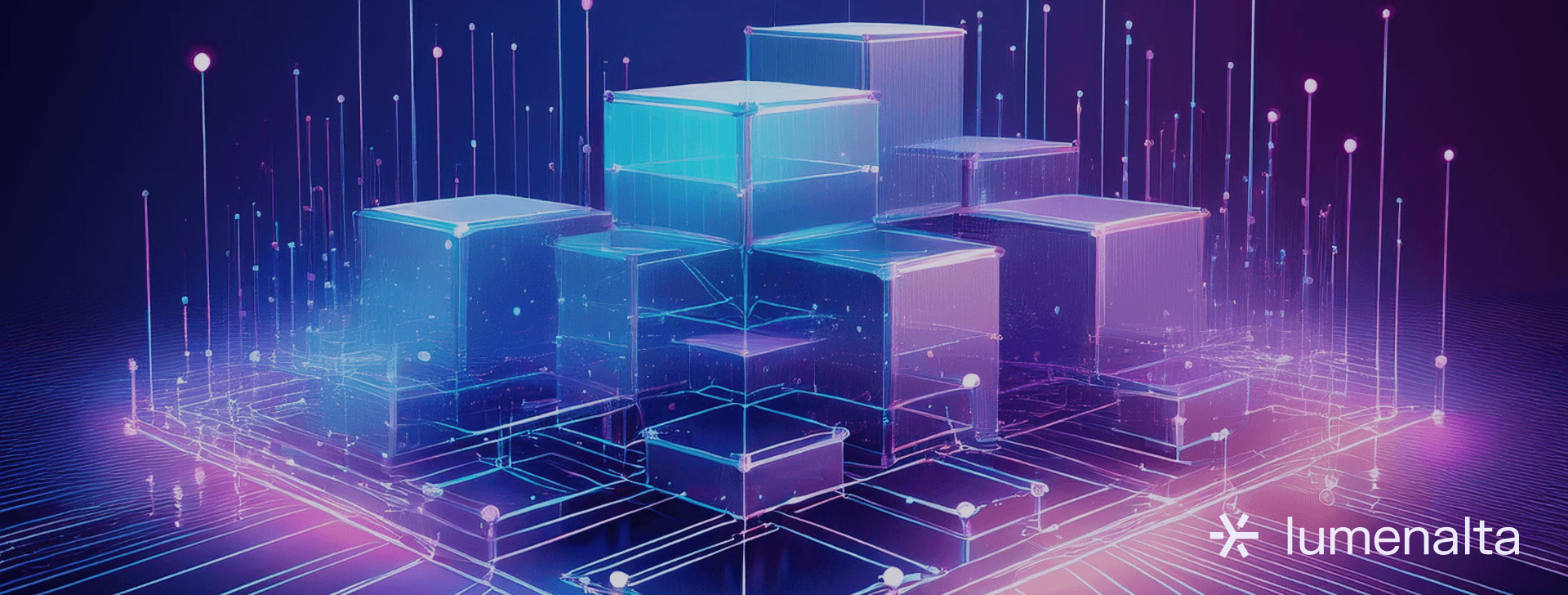

6 use cases of AI in data centers
JAN. 16, 2025
6 Min Read
AI is redefining data center operations, improving efficiency, security, and scalability across IT infrastructure.
As data requirements grow and systems become more complex, traditional management methods struggle to meet performance expectations. AI removes these inefficiencies by automating key processes, predicting potential failures, and optimizing resource allocation instantly. Businesses that integrate AI into their data centers benefit from improved uptime, lower costs, and stronger cybersecurity, creating a more resilient and cost-effective foundation for future growth. As AI continues to shape industries, Microsoft highlights its potential as a pivotal driver of innovation and economic advancement in analyzing AI’s role in the U.S. economy.
Key takeaways
- 1. AI improves data center efficiency by automating workload distribution, optimizing resource allocation, and predicting system failures before they occur.
- 2. AI-powered security solutions detect and respond to cyber threats in real time, reducing the risk of unauthorized access and data breaches.
- 3. Energy consumption is reduced through AI-led cooling optimization and intelligent power distribution, lowering operational costs without sacrificing performance.
- 4. AI enhances uptime and reliability by predicting hardware failures early, allowing IT teams to take preventive action before disruptions happen.
- 5. AI enables data centers to scale infrastructure based on actual usage patterns, improving performance while minimizing unnecessary hardware investments.
The role of data center AI
Artificial intelligence plays an important role in modern data centers, helping organizations manage large-scale operations with greater accuracy and efficiency. As workloads grow, traditional methods of overseeing data center performance become inefficient, leading to delays, downtime, and unnecessary costs. AI solves these challenges by automating complex tasks, analyzing vast amounts of data in real time, and identifying areas for improvement without manual intervention. This technology allows data centers to operate with greater precision while reducing the burden on human operators.
AI in data centers improves efficiency across multiple functions, from resource allocation to security monitoring. Automating routine processes reduces human error, lowers operational costs, and helps organizations scale infrastructure based on usage patterns. AI-led analytics predict potential failures before they happen, reducing downtime and improving reliability. Security protocols also benefit, with AI detecting anomalies and potential threats faster than traditional monitoring tools. These advancements contribute to a more cost-effective, resilient, and high-performing data center operation.
"AI addresses these challenges by predicting potential failures, streamlining energy usage, and enhancing security."
Key components of an AI data center
AI enhances data center operations through specialized infrastructure, automation, and real-time analytics. Traditional data centers rely on manual processes to manage workloads, security, and power consumption, which limits efficiency and increases costs. AI eliminates these inefficiencies by introducing automated monitoring, predictive maintenance, and intelligent resource allocation. Organizations incorporating AI into their data centers benefit from improved operational performance, cost savings, and stronger security protocols.
- High-performance computing (HPC) infrastructure: Advanced processing units such as graphics processing units (GPUs), tensor processing units (TPUs), and optimized central processing units (CPUs) provide the computational power required to handle complex AI workloads and large datasets.
- AI-powered monitoring and analytics: Automated systems collect, process, and analyze massive amounts of data in real time. This allows AI to detect anomalies, optimize workloads, and predict hardware failures before they disrupt operations.
- Energy-efficient cooling systems: AI analyzes temperature variations across the facility and adjusts airflow and cooling methods accordingly. This reduces excess energy consumption and lowers operational costs.
- Automated workload management: Machine learning models distribute workloads across servers based on traffic patterns, resource demand, and system efficiency. This prevents bottlenecks and improves overall system performance.
- Advanced security protocols: AI-based security systems monitor network activity, detect unauthorized access attempts, and respond to cyber threats faster than traditional security tools. Behavioral analytics help identify patterns linked to potential security breaches.
- Scalable storage solutions: AI improves data storage efficiency by categorizing and organizing large datasets. Automated tiered storage solutions allow businesses to balance performance with cost-effective storage options.
AI in data centers delivers measurable benefits by increasing automation, improving security, and optimizing resource utilization. These components allow businesses to scale operations more effectively, reduce operational risks, and maintain high levels of reliability.
6 use cases of AI in data centers
As data volumes grow and infrastructure complexity increases, traditional management methods struggle to keep pace. Manual monitoring, reactive maintenance, and static resource allocation contribute to unnecessary costs and operational risks. AI addresses these challenges through predictive analytics, automation, and intelligent resource management, allowing businesses to optimize performance while reducing operational expenses.
Integrating AI into data center operations introduces opportunities for higher uptime, better energy efficiency, and stronger cybersecurity measures.
1. Predictive maintenance
 Unexpected hardware failures disrupt operations and increase costs. AI reduces these risks by predicting issues before they escalate, allowing teams to schedule repairs and replacements at the right time.
Unexpected hardware failures disrupt operations and increase costs. AI reduces these risks by predicting issues before they escalate, allowing teams to schedule repairs and replacements at the right time.Machine learning models analyze historical performance data, equipment sensors, and system logs to detect patterns linked to potential failures. Identifying early warning signs helps prevent sudden breakdowns, reducing downtime and lowering repair costs. AI-powered monitoring also tracks gradual performance declines, allowing IT teams to intervene before infrastructure reaches critical failure points.
This approach extends the lifespan of data center AI equipment while reducing operational disruptions. Businesses benefit from lower maintenance costs, improved system reliability, and fewer unplanned outages.
2. Energy efficiency

Cooling systems account for a significant portion of data center energy consumption, and inefficient cooling strategies lead to excessive power usage and higher costs. AI optimizes energy consumption by analyzing temperature trends, equipment workloads, and environmental conditions to adjust cooling methods based on immediate needs.
Automated energy management identifies underutilized servers and redistributes workloads to reduce energy waste. AI also fine-tunes power distribution across the facility, preventing unnecessary consumption without compromising performance.
Lowering energy costs benefits both the business and the environment. AI-based energy efficiency strategies allow data centers to operate with greater precision while reducing overall electricity expenses.
3. Automated infrastructure management
 Managing infrastructure across large-scale data centers requires constant oversight of servers, storage systems, and network equipment. AI automates these processes, reducing manual intervention while optimizing resource distribution.
Managing infrastructure across large-scale data centers requires constant oversight of servers, storage systems, and network equipment. AI automates these processes, reducing manual intervention while optimizing resource distribution.Intelligent systems monitor workloads and adjust resource allocation based on real-time conditions. Automated infrastructure management prevents resource shortages, balances network traffic, and reduces the risk of hardware overuse. This allows IT teams to focus on higher-level priorities rather than troubleshooting routine operational issues.
Automation leads to greater efficiency, improved uptime, and a more scalable data center architecture. Businesses that incorporate AI into infrastructure management gain better control over resource allocation while reducing operational complexity.
4. Enhanced security measures
 Cybersecurity threats continue to grow, and data centers remain a high-value target for attacks. AI strengthens security by analyzing network traffic, detecting suspicious behavior, and responding to potential breaches faster than traditional monitoring tools.
Cybersecurity threats continue to grow, and data centers remain a high-value target for attacks. AI strengthens security by analyzing network traffic, detecting suspicious behavior, and responding to potential breaches faster than traditional monitoring tools.Machine learning models track login attempts, user activity, and file access patterns to detect unusual behavior. AI-powered security systems identify potential threats in real time, preventing unauthorized access and reducing the risk of data breaches. Automated threat detection enhances overall security by minimizing the chances of human error in monitoring and response efforts.
Stronger security protocols help protect sensitive data, prevent costly incidents, and support compliance with industry regulations. Businesses gain an added layer of protection without increasing manual security workloads.
5. Improved network performance
Network congestion and latency issues impact application performance and overall data center efficiency. AI improves network reliability by analyzing traffic patterns, predicting congestion points, and optimizing data routing to maintain smooth operations.
Intelligent traffic management tools allocate bandwidth where needed, preventing bottlenecks before they disrupt service. AI also detects potential network failures in advance, allowing IT teams to take action before performance drops.
Improving network efficiency enhances user experience, minimizes downtime, and supports high-demand applications without unnecessary infrastructure expansion. AI-based network optimization allows businesses to scale operations while maintaining consistent performance.
6. Dynamic resource scaling
 Workload challenges fluctuate based on application usage, seasonal trends, and business needs. AI allows data centers to adjust resource availability in real time, allocating computing power and storage based on actual needs.
Workload challenges fluctuate based on application usage, seasonal trends, and business needs. AI allows data centers to adjust resource availability in real time, allocating computing power and storage based on actual needs.Automated scaling algorithms track usage patterns and system performance, increasing resources when needed and scaling back during lower-traffic periods. This prevents overprovisioning, reduces energy waste, and lowers operational costs without impacting performance.
Adaptive resource scaling helps businesses control infrastructure expenses while maintaining performance standards. AI-powered capacity management allows organizations to respond to workload changes efficiently without unnecessary hardware investments.
AI is growing in modern data centers, helping businesses reduce costs, improve efficiency, and strengthen security. These use cases highlight the impact AI has on data center operations, demonstrating how automation and intelligence contribute to a more reliable and cost-effective infrastructure.
"Predictive maintenance extends the lifespan of data center infrastructure by reducing wear and tear from reactive maintenance cycles."
Implementing AI in data centers
Integrating AI into data center operations requires a strategic approach that aligns with business objectives, infrastructure capabilities, and long-term scalability goals. Traditional data centers rely on manual monitoring, maintenance, and resource allocation processes, which can lead to inefficiencies, higher costs, and operational risks. AI removes these challenges by automating repetitive tasks, predicting failures, and optimizing system performance in real time.
Successful implementation begins with identifying areas where AI can deliver the highest impact, such as predictive maintenance, energy management, and security automation. Organizations must invest in high-performance computing infrastructure, scalable storage solutions, and AI-based analytics platforms to support data-intensive workloads. Training machine learning models with historical and instant data enhances accuracy, allowing AI systems to make informed operational adjustments.
Integrating AI into data centers improves reliability, reduces operational costs, and enhances efficiency. Businesses that adopt AI-led automation gain better control over resource utilization while minimizing downtime and security vulnerabilities. A structured implementation strategy ensures that AI solutions align with organizational goals, creating a more adaptable and cost-effective infrastructure.
Benefits of AI in modern data centers
AI improves data centers' efficiency, security, and scalability, addressing common challenges such as high energy costs, infrastructure limitations, and increasing cybersecurity risks. Traditional data center operations rely on manual oversight and static resource allocation, which can result in inefficiencies and unplanned downtime. AI removes these barriers by automating complex processes, predicting hardware failures, and optimizing workload distribution based on immediate needs. Organizations that integrate AI into their data center operations benefit from stronger performance, lower operational costs, and greater flexibility.
- Lower operational costs: AI optimizes energy consumption, automates cooling adjustments, and reduces reliance on manual monitoring. These efficiencies lead to significant cost reductions while maintaining high system performance.
- Increased uptime and reliability: AI-based monitoring detects early signs of hardware degradation, allowing proactive maintenance before issues cause downtime. This reduces service disruptions and improves overall infrastructure reliability.
- More efficient resource allocation: AI distributes workloads intelligently, balancing computing power across available infrastructure. This prevents unnecessary strain on specific hardware components while reducing underutilization.
- Enhanced security protections: AI identifies suspicious network activity, detects potential cyber threats, and responds to anomalies faster than traditional security tools. These automated security measures reduce the risk of data breaches and unauthorized access.
- Greater energy efficiency: AI improves cooling and power management by analyzing workload patterns and adjusting system performance to reduce unnecessary energy use. This results in lower electricity costs and a more sustainable operation.
- Faster problem resolution: AI continuously monitors network activity, hardware performance, and server capacity to detect potential failures before they escalate. Identifying and resolving issues early reduces system downtime and minimizes disruptions.
- Scalability for long-term growth: AI streamlines infrastructure expansion by managing workload balancing, server utilization, and system integration. These capabilities allow businesses to scale operations efficiently without overinvesting in unnecessary resources.
AI redefines data center management by automating critical functions and improving operational efficiency. Businesses that implement AI-based solutions gain measurable advantages in cost reduction, security, and scalability, positioning their infrastructure for long-term success.
AI is shaping the future of data center management, making operations faster, more innovative, and more efficient. Automating resource allocation, enhancing security, and improving energy efficiency allows businesses to focus on growth while reducing operational risks. At Lumenalta, we specialize in AI-powered solutions that align with your business objectives, helping you maximize performance while controlling costs. Let’s build a brighter path forward.
Table of contents
- The role of data center AI
- Key components of an AI data center
- 6 use cases of AI in data centers
- 1. Predictive maintenance
- 2. Energy efficiency
- 3. Automated infrastructure management
- 4. Enhanced security measures
- 5. Improved network performance
- 6. Dynamic resource scaling
- Implementing AI in data centers
- Benefits of AI in modern data centers
- Common questions about AI in data centers
Common questions about AI in data centers
How does AI improve data center efficiency?
What role does AI play in data center security?
Can AI help reduce data center energy consumption?
How does AI contribute to better uptime in data centers?
What is the future of AI in data centers?
Want to learn how AI can bring more transparency and trust to your operations?









